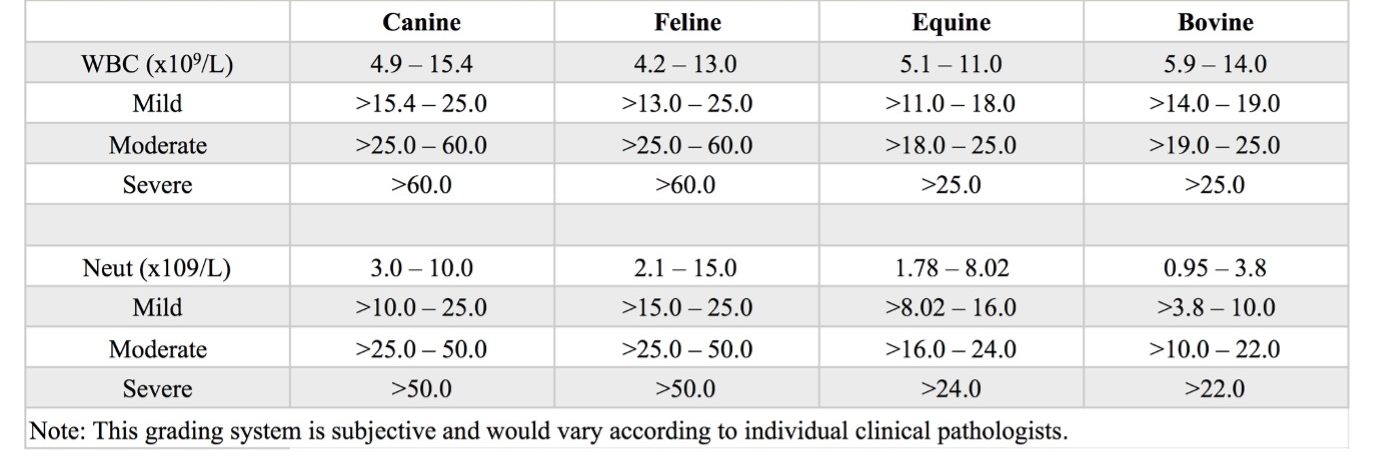Interpreting the Leukogram
Total WBC counts generated from automated instruments reflect the number of nucleated cells in the sample. If circulating nRBCs are present in significant numbers, then the leukocyte count must be adjusted accordingly. Although some instruments generate differential leukocyte counts, typically, in veterinary medicine, differential counts are done manually by smear evaluation. Differential counts generated from automated instruments are inaccurate for veterinary use and fail to recognize the presence of a left shift (increased numbers of immature neutrophils) and toxic change. The information provided by the hematology instrument should always be followed by smear evaluation and a manual WBC differential count. Usually 100 to 200 sequential WBCs are identified according to lineage. Morphology, including toxic change in neutrophils, atypia, and cell disintegration are also noted. Absolute numbers are generated by multiplying the percent for each cell type by the absolute or total white blood cell count. Interpretation of the leukogram is based on the absolute WBC numbers rather than the relative percentages, which can be very misleading under certain circumstances.
When describing leukogram findings, grading the degree of change relative to the RI is very useful. For example, if there is an elevated WBC count, describe the elevation as mild, moderate, or severe. Generally, large animals do not mount leukocytosis, particularly neutrophilia, to the same degree as small animals, so these descriptors do not mean the same for all species (Table 2.1). Fibrinogen, measured by heat precipitation of plasma, is reported for large animals as an additional indicator of inflammation (see Chapter 12: Proteins).
Stress or excessive endogenous cortisol influence, is commonly reflected in the leukogram of domestic animals. Lymphopenia is the most consistent change attributable to stress. In mature cattle, a reversal in the neutrophil to lymphocyte ratio is indicative of a stress response, even if both neutrophils and lymphocytes are within RI. Neutrophilia and monocytosis often accompany lymphopenia in “stressed” cats and dogs. Neutrophilia and monocytosis can also be seen with inflammation, and it can be difficult sometimes to determine if an animal is just “stressed” or has concurrent inflammation, depending on the degree of change in these numbers.


